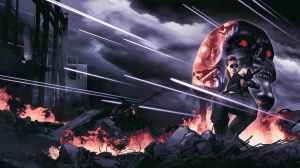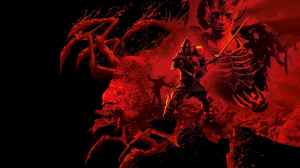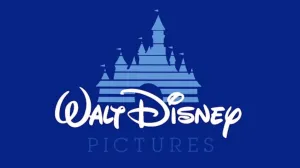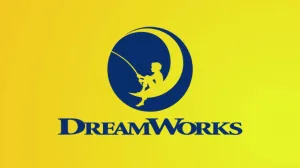The Elder Scrolls IV: Oblivion was a totemic game when it was originally released in 2006. A critical and commercial success, Bethesda Game Studios’ then-latest RPG showed what was possible on the new generation of hardware. It was a little more accessible than its predecessor, Morrowind, but it paid off and set the studio on the mostly prestigious path that it is on today. And while it helped establish the modern Western RPG template, it also, sadly, helped kickstart how microtransactions would be handled going forward. The controversial Horse Armor DLC is back front and center in its recently released remaster, giving players a way to jump in on the controversial 19-year-old meme as they gallop through this upgraded version of Cyrodiil. But it’s a meme that had a vast and ugly impact and helped make the industry a little worse.
Videos by ComicBook.com
The remaster is seemingly enamored with the joke since the premium equestrian gear can be seen in the debut trailer and part of the marketing materials for the base game and deluxe edition (meaning there are two different sets of horse armor). But that betrays how it was first perceived.

RELATED: Capcom’s Games Are Too Good for Gross Unlock DLC
In speaking about how Xbox Live Marketplace would be a “big deal,” executive producer Todd Howard told EGM in November 2005 that horse armor would be the first item offered because the team thought it would “be cool if you could buy armor for your horse.” The Elder Scrolls 3: Morrowind had DLC, too. It received premium expansions in addition to free smaller bits of DLC. That trend would indicate that something as paltry as mostly cosmetic horse armor would come to Oblivion for no extra cost.
But that was not the case. The Horse Armor Pack was $2.50 on Xbox 360 and $1.99 on PC, something that’s often attributed to being one of the first microtransactions (Xbox 360 launch title Kameo: Elements of Power also had microtransactions just before Oblivion). Howard even told IGN that someone at Xbox told Bethesda that the original lower price it pitched wasn’t ideal since Microsoft charged more than that for dashboard themes.
Price ended up being a main concern when it actually debuted two weeks after the base game launched. Users were up in arms over its value because it only added a few lines of dialogue and armor that boosted your horse’s health. Bethesda even had to play defense right after launch, with former VP of PR and marketing Pete Hines saying the team was not “going to make any knee-jerk decisions based on it [the armor] being available for five hours” and it would “see what folks think and put out a few others we have planned and figure out where to go from there.” It was a punchline in many gaming magazines and is often cited as one of the worst pieces of DLC, especially when juxtaposed against Oblivion’s actual expansions that were more money but yielded exponentially more gameplay value.

Like a loyal steed, it followed Bethesda for years after, too. When asked about it in the aforementioned IGN interview, Howard noted that “people will buy anything, [but] that doesn’t mean you should do it” and that he thought it was “fine” before conceding that the “price point at the time was the issue.” Hines said it was an important lesson in value. The team even raised its price for April Fools’ Day as it also lowered the cost for the other Oblivion DLC.
But Bethesda staff members often brought it up in the context of how successful it was. Howard said in a different IGN interview that it was “one of the most popular” pieces of DLC the team had done, something Hines also more or less echoed a few years prior. Senior level designer Joel Burgess praised the Horse Armor Pack during a GDC 2015 talk by saying it helped the developer “test the pipeline and just sort of feel out the market.” He also explained that all the other successive DLC for the game was “built on the back of the horse armor” as it was able to do bigger expansions while other developers were often “constrained to doing things like gun packs or cash packs.”
It’s understandable why people who financially benefit (or are part of a company that does) from these types of practices would praise the results. Whatever negative press Bethesda got was seemingly more than offset by the money the Horse Armor DLC raked in. Even lead designer Bruce Nesmith said the team thought its sales were unexpected given how much blowback it received. “You’re all making fun of it and yet you buy it,” he stated. Given the timing and what came after, it’s hard not to point to that specific microtransaction for having an incredible impact on what was acceptable going forward.

Today, Ubisoft is hawking horse skins in Assassin’s Creed Shadows for around $9.50. Epic Games is selling an outfit in Fortnite based on the Teenage Mutant Ninja Turtles’ Casey Jones for close to $13.50. The current weed-themed Jay and Silent Bob bundle in Call of Duty is about $28. Many of the biggest games — a lot of which are not even free-to-play — are charging exorbitant amounts of money for often cosmetic offerings that make $2.50 armor for a mount seem quaint.
But as quaint as it seems now, it’s still important because of how it moved the needle. It made Bethesda tons of money and other companies followed suit. That kind of thinking led to more cosmetic DLC, as well as on-disc DLC, season passes, online passes, battle passes, and, tragically, loot boxes where players were gambling for skins instead of paying for them directly. As market research company Circana’s Mat Piscatella, before noting consumers spent $10.4 billion on microtransactions in 2024, put it: “Horse Armor walked so Battle Passes could run.”
It’s a sad reflection of the current environment that Bethesda is selling the remaster’s digital deluxe edition with more premium horse armor and it doesn’t even register as something out of the ordinary. These sorts of cosmetics are almost always part of digital deluxe editions that are seldom worth the upgrade fee, but it’s still strange to see the Horse Armor DLC come full circle like this and be used as a joke to sell a more expensive version of a remaster.
Some other publisher would have broken the mold if Bethesda didn’t, and, to be fair, Bethesda is also known for developing meaty expansions. But it did play a pivotal role in moving the Overton window for DLC. Ever since then, it has been a race for publishers to push the boundaries of what is acceptable so that the almighty line will always go up. The crapifying black hole of late-stage capitalism means we would have inevitably gotten to this place anyway, but it’s just poetic that a horse got us here just a little faster.








